Expert’s Rating
Pros
- Outstanding sound
- Spatial audio support
- AAC, aptX, and LDAC codec support
Cons
- Do you really want earbuds tracking your health?
Our Verdict
These outstanding in-ear headphones deliver noise cancelling, customizable EQ; AAC, aptX, and LDAC codec support; and even a health-tracking feature.
Best Prices Today: Anker Soundcore Liberty 4

Not Available
Anker’s Soundcore brand has consistently proven itself as an audio brand that offers outstanding value at great prices. Its headphones, speakers, and earbuds might not be the very best you can buy, but they’re almost worthy of comparison to gear costing far more from more famous brands.
With the new Soundcore Liberty 4 in-ear headphone, Anker has loaded up on a slew of new features. Some of them are useful, others may just be trial balloons floated to see if customers want something different in an earbud. They sound great, so the new features can easily be ignored if they’re less than perfect or hold no interest.
The Soundcore Liberty 4 offer spatial audio, Anker’s custom active noise cancellation, support for Sony’s LDAC codec, customizable EQ settings, and a suite of new health-tracking features. If you’re not interested in any of that, the default Soundcore Signature settings deliver a superior listening experience, and you’d never need trouble yourself with all the extras.
This review is part of TechHive’s in-depth coverage of the best noise-cancelling headphones.
How are the Soundcore Liberty 4 designed?
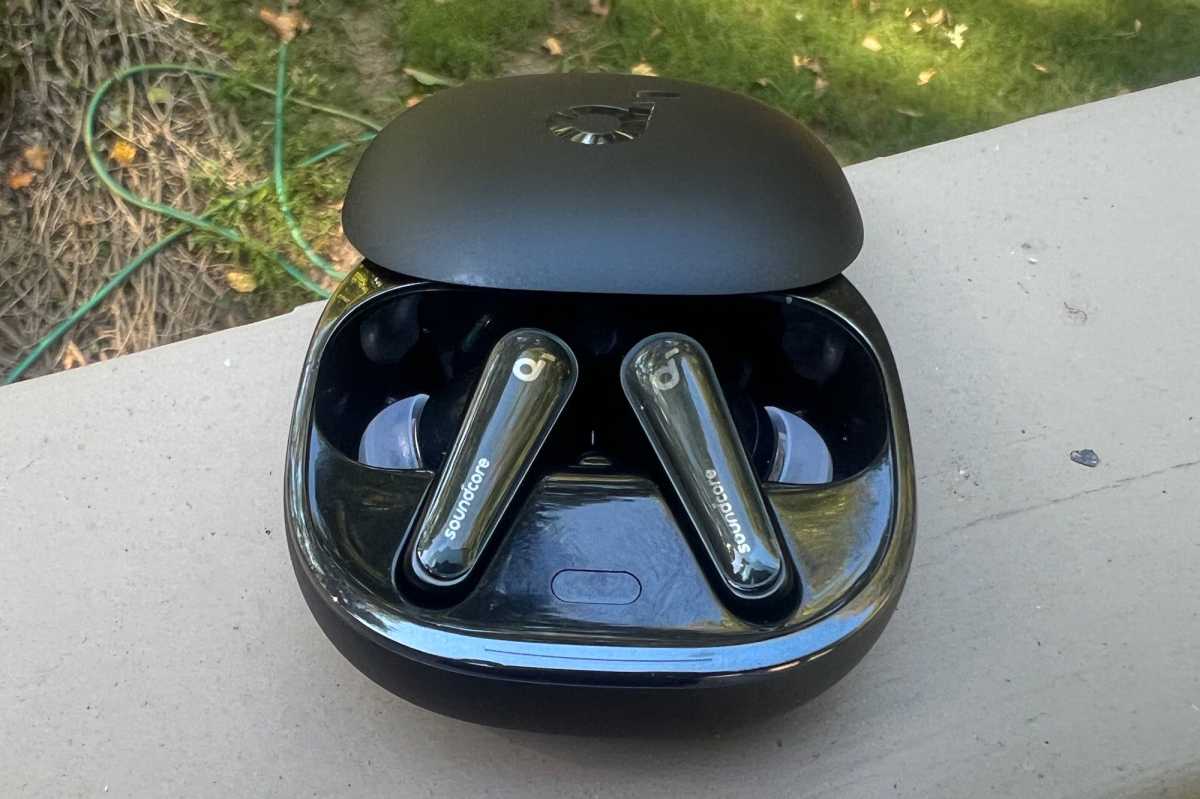
The Soundcore Liberty 4 case more than triples the earbuds’ effective battery life.
James Barber/Foundry
At a time when manufacturers seem to be in a race to make their earbuds as small as possible (including Anker’s own excellent Soundcore Space A40), the Soundcore Liberty 4 is an aggressive step back to the stems that dominated the in-ear headphone market just a few years back.
For some of us, the stems are welcome because they make for easier-to-use touch controls but Anker has almost certainly added some size to this headphone to make room for some of the new technology they’ve incorporated into the Soundcore Liberty 4.
What are the Soundcore Liberty 4’s specs?
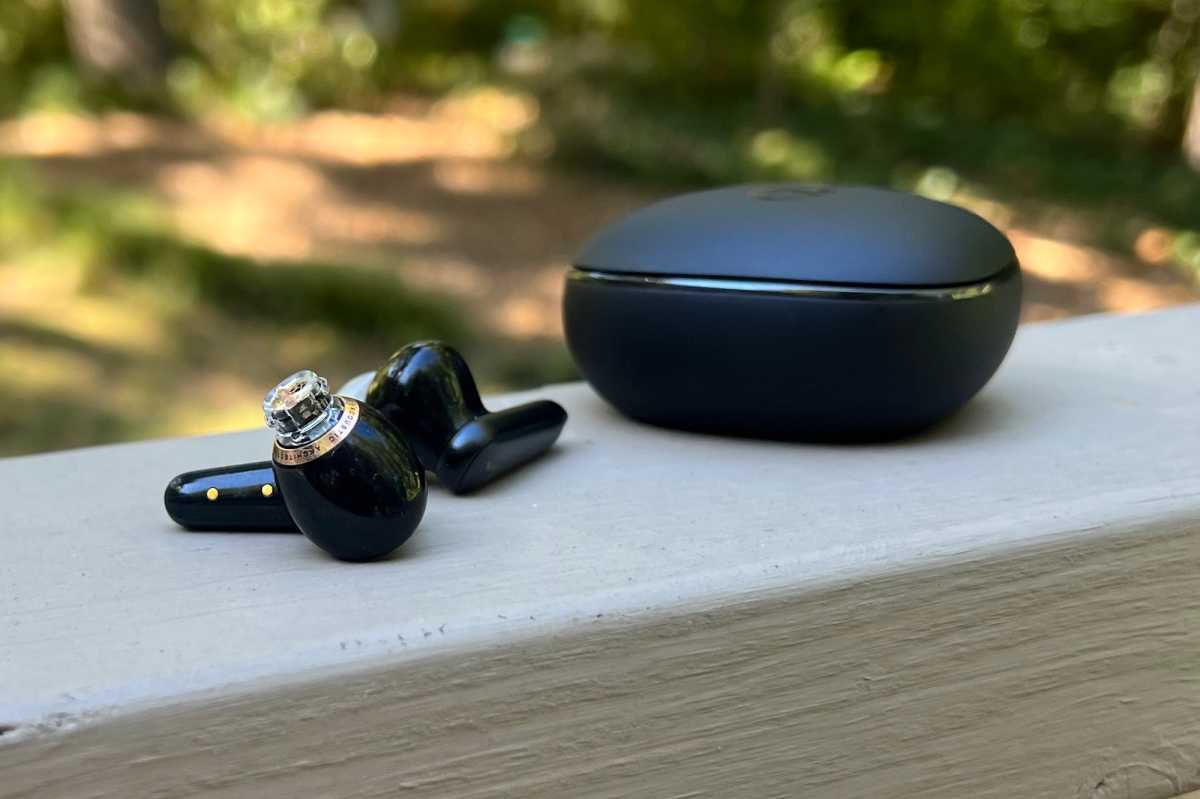
The Soundcore Liberty 4 headphone features a 9.2mm and 6mm dual dynamic driver on each earbud.
James Barber/Foundry
The Soundcore Liberty 4 support Bluetooth 5.3 and the the aptX, AAC, SBC, and LDAC codecs. There are 9.2mm and 6mm dual dynamic drivers in each earbud. The woofer is made from TPU and wool, while the tweeter is PEN.
They’re available in black or white and come with a charging case with a lid that slides to open. It’s a little bit less than 2.5 inches square(-ish) and just over an inch thick, making it easy to transport. The earbuds come with medium silicone tips preinstalled and, in the box, you get a backup pair of medium tips plus two more pairs in small and large.
There’s a USB-C charging cable but the case also supports Qi charging. Anker promises up to 9 hours of normal setting playback from the earbuds (bumped to 28 hours with a fully charged case). If you’re using spatial audio settings, look for 5 hours (15 total with case), ANC mode offers 7 hours (24 with case), and LDAC up to six hours. That’s a lot of ways to listen and impressive battery life for every one of them.
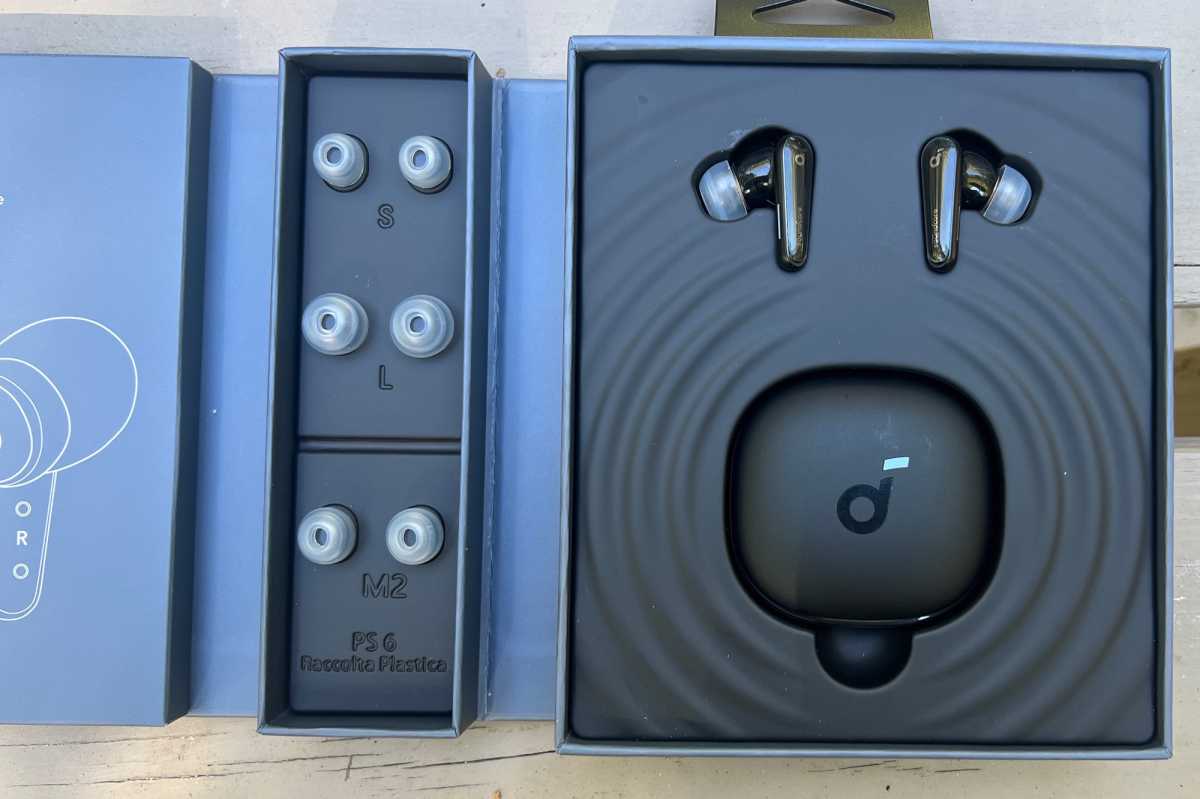
The Soundcore Liberty 4 box comes with multiple eartip sizes, so users can get the best possible fit.
James Barber/Foundry
What controls do the Soundcore Liberty 4 have
There’s a full-featured Soundcore app available for both iOS and Android, which lets you set the touch controls. Default is that a single press lets you play or pause the music, a double press controls the ANC settings, and a triple press on the left-hand earbud skips to the previous track and to the next track on the right-hand bud.
“Press” is the word that Soundcore uses in the app to describe the action, but it’s more like an AirPod-style pinch. This is a welcome tactile change from the taps that control many earbuds, since most of the hotspots on those seem to be moving targets that I can never hit on the first try. After two minutes of using the Liberty 4, I had the controls nailed.
What health-monitoring features does the Soundcore Liberty 4 have?
Can an in-ear headphone replace your smartwatch as a health monitor? Is that a feature that many users are looking for? Anker touts the Soundcore Liberty 4’s built-in heart-rate sensor, and the app monitors your heart rate whenever you have the right-hand earbud in your ear.
You can also track your exercise routines in the app, and there are a series of guided workouts or you can create and save your own. Lastly, there’s a stress detection feature that tracks your heart rate variability.
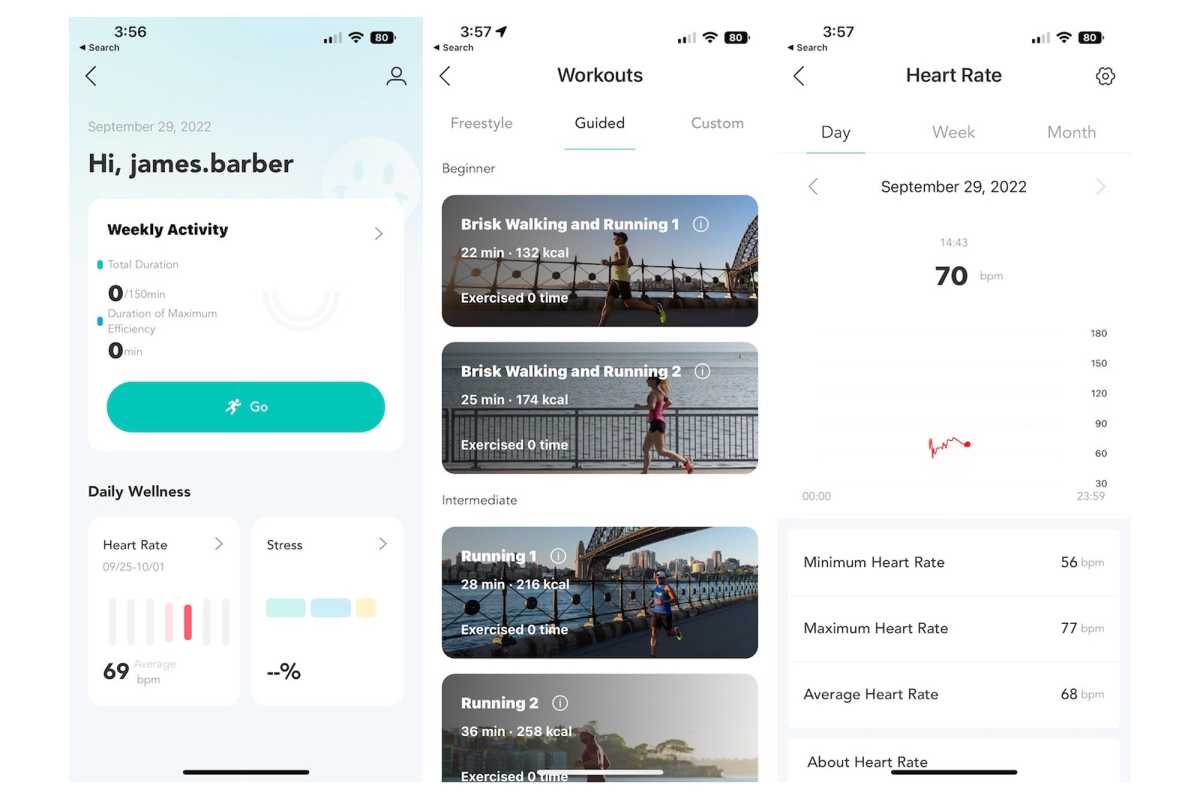
he Soundcore Liberty 4 introduces an array of health tracking features, much like the ones you’d see with a smartwatch.
James Barber/Foundry
These features are well-executed and polished. As someone who uses an Apple Watch to track fitness, I do wonder exactly who this feature is for. No one is going to wear earbuds 24/7, and most people who are serious about health tracking will a smartwatch—if for no other reason that they won’t take one off very often.
If you do want to use your earbuds and smartphone to track your workouts, the tools offered here are far more polished than what I’ve seen from the software included with bargain-basement fitness trackers. Maybe there’s a market for this. If so, Anker has made a good first step with the Soundcore Liberty 4.
Soundcore Liberty 4 listening tests
Anker has invested a lot of effort into its personalized sound features, and there’s an array of customization options for anyone who wants to tweak the Soundcore Liberty 4’s excellent out-of-the-box sound.
The Soundcore app’s HearID test allows the user to take a hearing test. Once the app plays a series of beeps at different frequencies and you identify which ones you can hear, the app plays back music with a few different profiles based on your test results. Tell the app which ones you prefer and at the end of the test, the app generates a sound profile designed to compensate for any hearing loss you might have. I’m lucky enough to have most of my hearing still intact, and I’m impressed by how Anker’s test presents its options. This is a great feature for aging ears.
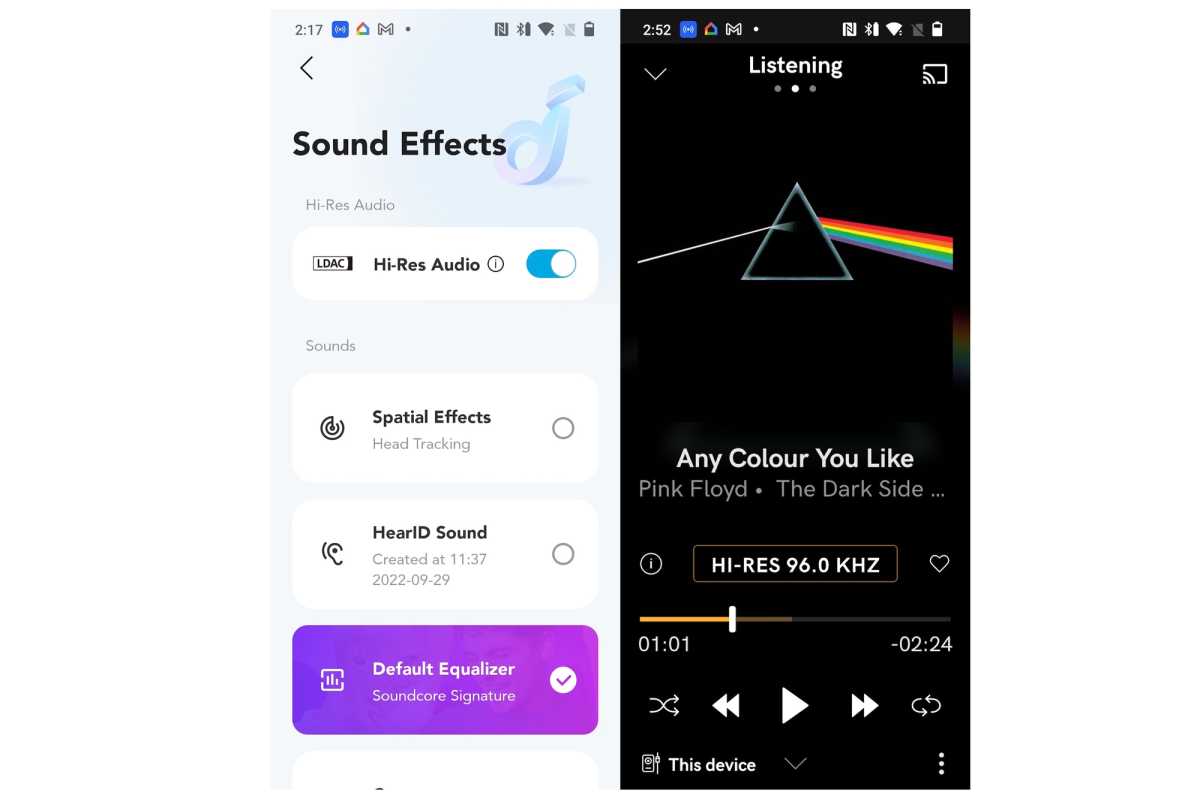
The Soundcore Liberty 4 are easy to customize to your hearing level.
James Barber/Foundry
HearID also helps with the active noise-cancellation settings. Once you run a test in a loud environment, the app creates a custom ANC profile. You then have the option of using it in adaptive mode that automatically adjusts based on ambient noise, or using Manual Mode to adjust the ANC to your liking. You can also turn off ANC or use it in Transparency Mode. The app allows you to set transparency to vocal mode, which lets conversation cut through, or Fully Transparent to let you hear other ambient sounds, such as cars.
There’s also a wide variety of EQ presets available in the app. I’ve always preferred the Soundcore Signature, but there are more than a dozen other options, including Acoustic, Bass Booster, Classical, Podcast, Hip-hop, Rock and Latin. If none of those work for you, there’s a Custom EQ panel that allows you to make your own profile and save it for later use.
How does spatial audio sound on the Soundcore Liberty 4?
The Soundcore Liberty 4 are compatible with the spatial audio formats streamed from services like Apple Music and Tidal, and they can also create simulated spatial audio with in-app processing. You can choose between fixed or head-tracking spatial audio, and there are modes for both music and movies.
Listening to the Dolby Atmos stream of “We Belong Together” from Mariah Carey’s 2005 album The Emancipation of Mimi on Apple Music, spatial audio must be turned on in the Soundcore app to work, but the results compare favorably to the how the surround-sound imaging works with the first-generation AirPods Pro. The same is true when watching a movie like 2021’s Dune on an iPhone. The Soundcore Liberty 4 spatial audio effect is a match for Apple’s native version. Also, please don’t watch Dune on an iPhone. My viewing was for audio testing purposes only.
How do the Soundcore Liberty 4 sound with stereo tracks?
The Soundcore Liberty 4 sound even better in stereo. I had a quick turnaround on this review and spent a few hours listening to a random Prince mix on Apple Music, and the Liberty 4 revealed just as much depth and detail in the AAC streams as Soundcore users have come to expect from products like the Space Q45 over-ear headphone and the Liberty 3 Pro in-ear headphone.
How does LDAC decoding sound on the Soundcore Liberty 4
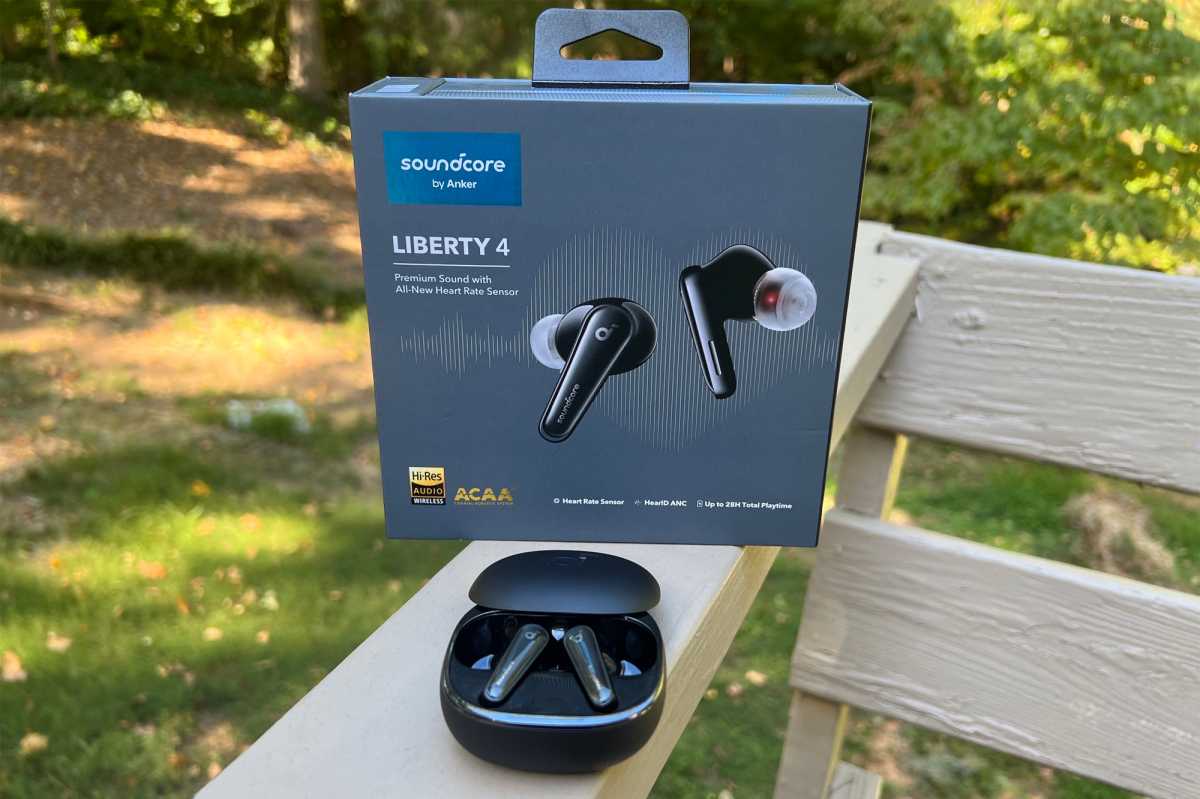
Support for the AAC, aptX, and LDAC codecs is a rarity, especially at this price point.
James Barber/Foundry
I also tested the Soundcore Liberty 4 with an Android OnePlus 10T Android phone, mostly to investigate LDAC streaming. Sony claims its codec can stream 32-bit/96kHz over Bluetooth at up to 990Kbps, while Qualcomm claims a dynamic bitrate from 279Kbps to 420Kbps for its aptX codec and the garden-variety SBC Bluetooth codec is limited to 328Kbps.
Qobuz streams Pink Floyd’s 1973 classic The Dark Side of the Moon at 24-bit/96kHz, so the track “Time” seemed like a good option to put LDAC to the test. I streamed three ways: first with AAC on the iPhone, then with aptX and LDAC on the OnePlus.
The Android aptX stream sounds roughly the same as the iOS AAC stream, but LDAC was remarkably better than either of the others, with appreciably more depth and a wider soundstage. To be fair, LDAC still can’t compare with a good DAC and wired headphones, but it’s a far better experience than I would’ve expected from a wireless headphone.
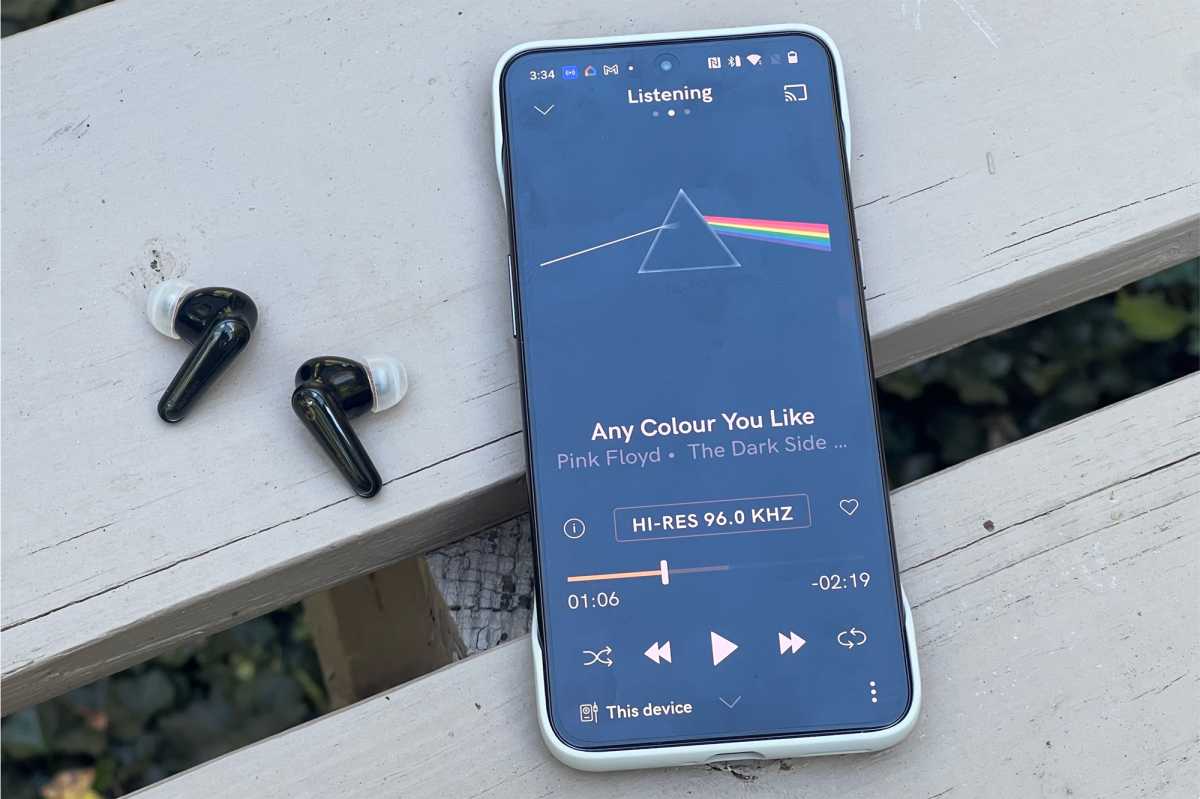
The Soundcore Liberty 4 headphone supports AAC for Apple devices, and both aptX and LDAC streaming with compatible Android devices.
James Barber/Foundry
Should you buy the Soundcore Liberty 4?
There’s a lot going on with these earbuds. Anker has loaded them with features that may or may not be of interest to most listeners, but they are a great-sounding headphone right out of the box. If you’re looking for earbuds that are easy to control, offer solid noise cancellation, will stay in your ears, and offer better-than-expected audio for the price, the Soundcore Liberty 4 is a fabulous value.
If you’re interested in digging in and dialing in specific audio settings, Soundcore’s also got you covered with a wealth of options for you to tweak EQ and ANC levels. The health and exercise features are quite good if you don’t already have another device to do that kind of tracking.
Finally, iPhone users should take note. Unless Apple has some new hi-res streaming protocol set to replace Bluetooth in the next year or so, iPhone users who want to use a wireless headphone are missing out without access to a higher-quality streaming protocol like LDAC. Is LDAC alone reason enough to switch to Android? For some listeners, the answer might be yes.




